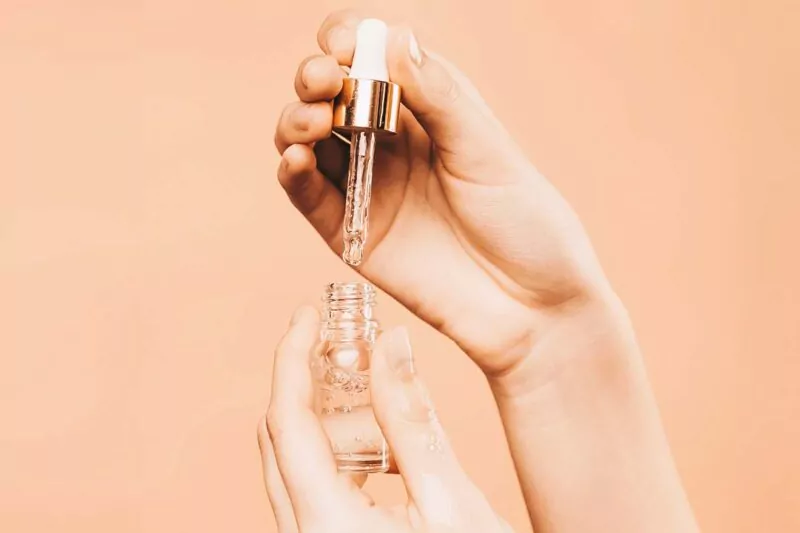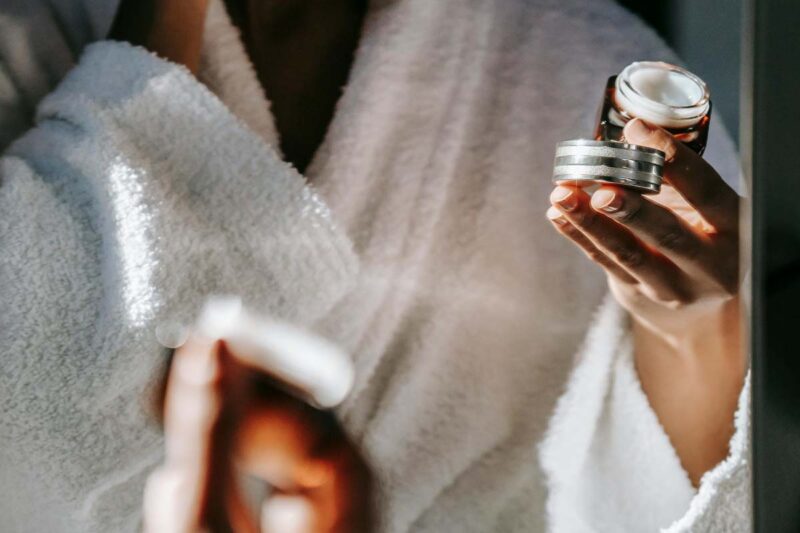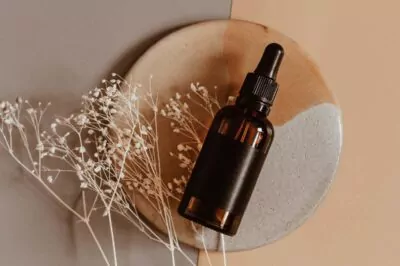Table of Contents[Hide][Show]
Retinol is a powerful ingredient known for its ability to renew and rejuvenate the skin. However, as powerful as retinol can be in transforming your skin, it’s not without its harmful side effects. During usage, your skin not only needs time to get accustomed to the activated ingredient, but continued exposure also poses risk for long-term detriments, such as thinning skin, increased sensitivity, and irritation.
Understanding these side effects of retinol on skin can empower you to decide whether or not this product is for you, despite its popularity, as well as consider if there are safer retinol-alternatives (such as bioactive A-complex) that provide similar results so that you can continue to care for your skin.
Common Negative Side Effects of Retinol
Irritation, Discomfort, and Redness
If you’ve recently added retinol to your skin care routine, you might notice signs of irritation, discomfort, and redness. This can manifest as a slight reddening of the skin, similar to a mild sunburn, or you may experience a more pronounced reaction, leading to discomfort and sensitivity. This is one of the most common initial reactions as your skin adjusts to the increased rate of skin resurfacing induced by retinol.
But why does this happen? The essence of retinol’s effectiveness lies in its ability to speed up skin renewal. This means that your old layer of skin is shed much quicker than usual, revealing new skin that hasn’t been exposed to the environment. This new layer is more sensitive and thus more prone to discomfort from external factors.
Dryness and Flaking
Another individual side effect that retinol users often encounter is skin dryness and flaking. This is characterized by a tight sensation in the skin, accompanied by peeling or flaky areas. It can feel uncomfortable, and you might be tempted to moisturize more than usual.
This dryness occurs for similar reasons as the discomfort and redness. As retinol promotes faster exfoliation, the surface of your skin might lose moisture faster than it can be replenished, leading to dry patches. The key here is to maintain a balanced moisture barrier with hydrating and moisturizing products that soothe and nourish the new skin.
Sun Sensitivity
A less immediately noticeable but equally important side effect of retinol use is increased sensitivity to the sun for some skin types. You might find that your skin burns more easily, or that you experience sun damage despite shorter periods of exposure. This heightened sensitivity can lead to sunburns and, in the long term, can lead to increased risk for skin cancer, as well as counteract the positive effects of the retinol.
The reason behind this increased sun sensitivity is the thinner, more exposed new layer of skin that retinol reveals. This fresh layer lacks the same protective qualities as older skin, making it more susceptible to UV rays. Therefore, wearing a high-SPF sunscreen and avoiding direct sun exposure, especially during peak hours the few days after application, becomes even more crucial when you’re using retinol.
Increasing Clogging Pores
For individuals battling with congested pores, the initial response to retinol can be disheartening. You might observe what seems like a worsening of your condition, with more visible clogging. This stage is often referred to as “purging.” It occurs because retinol’s exfoliating action brings hidden clogged pores to the surface faster than normal.
Precautions When Using Retinol

While the benefits of retinol in your skin care regimen may bring desirable change in the short-term, it’s not one that doesn’t come with consequences, especially with prolonged usage. If incorporating retinol, it’s important to approach with caution and consider the onset of adverse effects.
Or, look for safe alternatives that provide the same benefits without any of the harsh downsides. Recognizing the popular demand for retinol, but displeased with the available options, we sought out to create something that could bring the same, if not better, noteworthy results without feeling the need to compromise safety. Cue the Activated Night Serum.
This special evening treatment harnesses the power of bioactive A-complex, derived from sustainable green algae, to bring forth the many benefits traditional retinols aim to do, like:
- Increased hydration for plump, firm skin
- Skin resurfacing and renewal for a smooth complexion
- Reducing the look of long-term swelling
- Supporting the skin’s natural multiplication process of fibroblasts to counteract outward signs of aging like saggy skin, enlarged lines, discoloration and uneven skin tone
We also feature this key ingredient in our Revitalize Boosting Elixir if you already have a serum you love using. Simply add 1-3 drops of Revitalize to your facial serum (or facial oil), blend, and apply in the evening.
While the bioactive A-complex is not harsh like traditional retinol, because this ingredient’s role is to have a resurfacing effect for gentle skin renewal, it is still important to shield the skin the following few days from harsh sun exposure. Protect your face with a non-nano zinc oxide sunscreen and wear a wide-brimmed hat.
Who Should Not Use Retinol?
Retinol, potent as it is, isn’t suitable for everyone. Certain individuals should avoid retinol or consult a dermatologist before starting its use.
- Those experiencing certain skin conditions: People with eczema, rosacea, or psoriasis should approach retinol with caution. These conditions can make the skin more sensitive and susceptible to discomfort. Before incorporating retinol into a skin care regimen, individuals with these conditions should consult with a dermatologist.
- Those under specific medical protocol: Those undergoing skin protocol such as chemical peels, laser therapy, or other forms of dermatological procedures should avoid retinol. Similarly, individuals on certain medications, especially other forms of topical retinoids or decongest pores, should speak to their healthcare provider before using retinol to prevent adverse reactions.
- Pregnant or breastfeeding women: Retinol and its derivatives are not recommended for pregnant or breastfeeding women due to the lack of conclusive safety data. As retinoids can be absorbed into the bloodstream and potentially affect the fetus or the nursing baby, alternative skin care ingredients are advised during this period.
- Those mindful of using a non-toxic beauty regimen: Shoppers who are especially mindful about the ingredients and products they put on their skin in regards to safety and purity may not align with the use of retinol due to its side effects related to hormone disruption, as well as its impact on skin health with its potential to thin skin overtime, irritate the skin, and increase skin sensitivity.
Disclaimer: The information provided in this section is for general informational purposes only and is not intended as medical advice. The response to skin care products, including retinol, can vary significantly depending on individual skin types and conditions.If you have concerns about incorporating retinol into your skin care routine, we strongly advise consulting with a skin care professional. They can provide personalized advice and guidance based on your specific skin health and needs. This ensures that any new product or ingredient is suitable and safe for your unique skin.
Starting with Lower Concentrations
When introducing retinol or retinol-alternatives into your skin care routine, it’s advisable to start with lower concentrations. Lower concentrations of any skin care active significantly reduces the risk of skin discomfort, redness, and peeling associated with higher strengths. This makes the introduction process more comfortable and manageable, especially for retinol beginners or those with sensitive skin.
For example, if incorporating bioactive A-complex into your routine, like the Revitalize Boosting Elixir, start with 1 drop. Or if starting with the Activated Night Serum, incorporate this product into your evening routine 1-2x a week to start. Observe how your skin reacts over several weeks. If your skin tolerates the product well without adverse effects, you can consider gradually moving to higher concentrations. It is always recommended to test patch before using any new product, especially if your skin leans more sensitive. This way, you can see an initial response by your skin before starting a full application.
With traditional retinol, you may notice fewer side effects as your skin becomes more accustomed to it. While this could be a sign that your skin is adapting, it doesn’t necessarily mean it’s best in the long run. For us, both safety and effectiveness are of utmost concern and that is why we choose to utilize bioactive A-complex instead. See the results with retinol-alternatives without succumbing to the potential risks to the health of your skin and your health overall.
Gradual Introduction into Skin Care Routine
Integrating a safe retinol-alternative into your skin care regimen can be done at a pace most comfortable to you to see how your skin responds. (Remember, these types of products are potent and activated, so if you find your skin tends to respond more sensitively, start gradually):
- Begin by applying a small amount of your retinol-alternative product once a week for the first two weeks.
- Monitor your skin’s response. If no significant discomfort occurs, increase usage to twice a week for another two weeks.
- Gradually increase the frequency of application, allowing at least one to two weeks between each increase, until you can use it every other day or everyday, as tolerated.
After that, pay attention to how your skin reacts after each application. Look for signs of redness, peeling, dryness, or discomfort. If you experience severe or persistent discomfort, reduce the frequency of use, and always consult with a skin care professional.
Keep in mind, our skin types are unique and optimal frequency may vary from user to user, which means daily application may not be for everyone. Your skin may respond best to less frequent use. Listen to your skin, and adjust accordingly.
Importance of Moisturizing
It’s important to maintain optimal moisture levels in the skin when using retinol-alternatives, as the skin is undergoing a process of renewal. Moisturizers help to create a barrier on the skin’s surface, which can protect against environmental stressors. . They also assist in rejuvenating the skin’s natural barrier, enhancing the skin’s ability to retain moisture, as well as soothe and nourish fresh skin.
You can look for moisturizers that are rich in emollients, like biocompatible facial oils. These ingredients help to lock in moisture and keep the skin nourished. For sensitive skin, essential oil-free formulas are preferable to avoid additional discomfort.
For Sun Lovers
One of the most crucial precautions when using resurfacing products like a retinol-alternative is using mineral-based skin protectors. As mentioned, retinol makes your skin more susceptible to sunburn and damage and retinol-alternatives can slightly increase photosensitivity. Therefore, it is important to apply a broad-spectrum sunscreen with an SPF of 25 every morning, especially after an evening application of your retinol-alternative, even on cloudy days or when indoors near windows.
Try to avoid harsh sun exposure the following few days. If you need to be outdoors, reapply sunscreen every two hours or after sweating or swimming. Additionally, wearing protective clothing and hats can further shield the skin from harmful UV rays. Tips for outdoor activities: Plan outdoor activities during times when the sun is less intense, typically before 10 a.m. and after 4 p.m. Seeking shade and avoiding direct sunlight during peak hours can significantly reduce the risk of sun-related skin issues.
Managing Side Effects When They Occur

Adjusting Frequency of Retinol Application
Everyone’s skin reacts differently to skin care products, some individuals may benefit from daily use, while others might find applying retinol or a retinol-alternative a few times a week more suitable. If you experience significant discomfort, redness, or dryness, consider reducing the frequency of your retinol-type product.
Start with a lower frequency, such as once or twice a week, and gradually increase as your skin becomes more accustomed to the product. This gradual approach helps mitigate side effects while allowing your skin to adapt to the retinol.
Soothing Methods and Products
To calm your skin, incorporate calming and hydrating products into your routine. Look for ingredients like aloe vera, chamomile, and hyaluronic acid, which can help reduce temporary redness and provide a cooling effect. Avoid using other harsh ingredients, such as exfoliants or alcohol-based products, in conjunction with retinol-type products as this can exacerbate skin discomfort. Instead, look for gentle, natural skin care solutions to complement your retinol-type regimen.
When to Take a Break from Retinol
As with any active, which are potent, targeted skin solutions, it’s crucial to recognize when your skin needs a break from retinol or retinol-alternatives. While harsh side effects are common with traditional retinols, if you experience severe or persistent discomfort, prolonged dryness, or increased sensitivity with safer retinol-alternatives, it’s time to pause usage.
At times, incorporating too many activities into a routine can overwhelm the skin (especially sensitive skin types), even when using non-toxic formulas. So, if you find yourself in this situation, let your skin recuperate by minimizing your skin care routine. Focus on gentle, hydrating skin care products. You can reintroduce your retinol-alternative into your routine once your skin feels more balanced and comfortable, starting slowly and with a lower concentration if necessary.
Additionally, if using multiple activities regularly, consider cycling in the different types of activities in phases.
Conclusion
Incorporating retinol-type products into your skin care regimen can offer transformative benefits, including improved texture, reduced signs of aging, and cleaner skin. However, it’s crucial to use it with care, particularly for those with sensitive skin or a preference for products with natural and organic ingredients.
Understanding the potential side effects of retinol in your skin is key to building an optimal skin care routine. Consider using safer retinol-alternatives without compromising skin health. By adjusting the frequency of application, incorporating soothing methods, knowing when to take a break, and seeking professional advice when necessary, you can maintain a healthy and effective skin care routine.
Remember, every skin type is unique, and what works for one person may not work for another. Listening to your skin, being patient, and adopting a gradual approach are essential steps in finding the right balance with resurfacing products like retinol-alternatives. With an informed approach, you can safely enjoy the benefits of a retinol-like product without negative impact to your hormones and health, keeping your skin looking radiant and healthy.








Leave a Reply